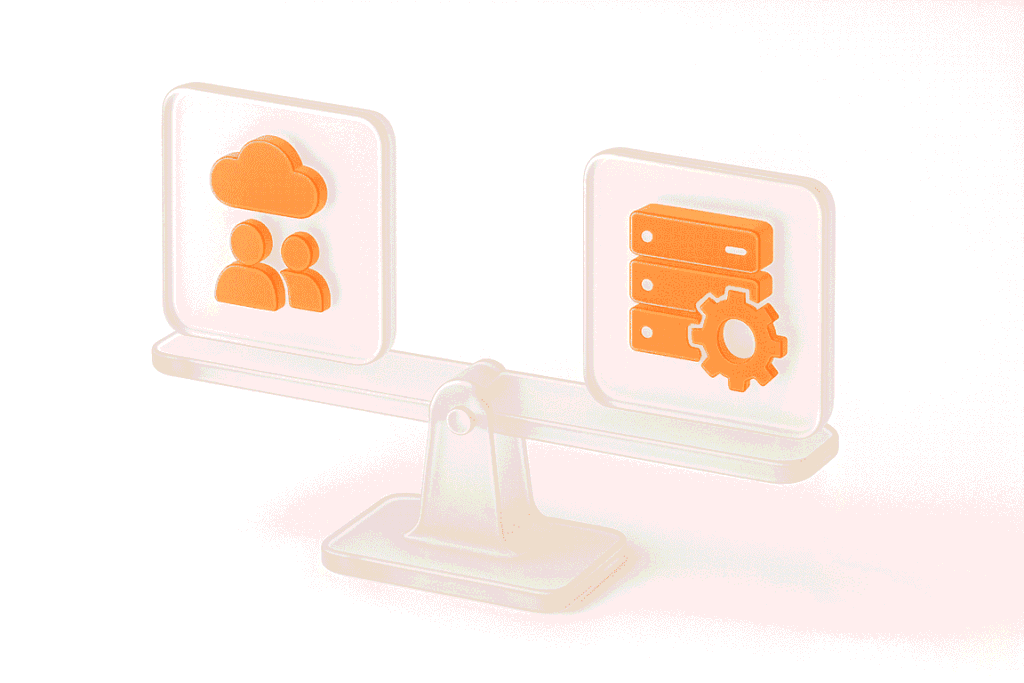About 85% of enterprise businesses use microservices. In this article, we will cover the primary specifics of microservices, explain why they need performance testing, and highlight how to make this process efficient.
Microservices in a Few Words
Microservices (or microservices architecture) refers to a methodology for developing and deploying applications. This approach separates an extensive application into smaller, modular components or services.
Each module has a distinct function or fulfills a specific business objective. They interact through clearly defined communication channels, often facilitated by application programming interfaces (APIs).
Microservices architecture extensively leverages virtual container and networking technologies. It is distinguished by its efficient development, deployment, and scalability processes, which make it particularly suitable for crafting applications tailored to the demands of modern public cloud environments.
What Makes Microservices Different
Unlike monolithic applications that represent single units, microservices are constructed as independently deployable components that can communicate with each other over a network. Such an architecture requires a testing approach that considers testing each service independently and within the entire application.
What Businesses Use Microservices
Various businesses widely use the microservice architecture. For instance:
Why Businesses Use Microservices
This data proves that businesses prefer microservices for several reasons: scalability, flexibility, agility, and fault isolation.
Microservices’ Core Challenges
Microservices prove to be efficient, but their usage is not spotless. We’ve listed the main challenges to consider:
Why Testing Microservices is a Must?
Though testing microservices seems tricky, the process undoubtedly has impressive benefits. They include:
Microservices Performance Testing
Microservices performance testing enables businesses to manage their services more efficiently, thus boosting revenues. These are the core things it helps to work on:
Scalability Assessment
Load testing lets one identify how a system scales under different load conditions.
Performance Assessment under Loads
Identifying the performance of each service under the set load makes it easier to allocate resources effectively. Meanwhile, individual testing is possible only if the tested service is completely isolated from others. This is rarely the case, so it’s better to test according to the actual load profile rather than synthetically load each service separately.
Response Time
This is a standard metric for any performance testing. When it comes to microservices, however, different methods should be considered, and response time should be studied with each one applied.
Failover Scenarios
Failover means “the process of switching to a backup component or system when the primary component fails.” Emulating failover scenarios involves creating situations where the system’s primary component temporarily stops responding to requests due to load or other issues.
Then, after some time, the backup component or system automatically takes over and continues processing requests. This approach enables the evaluation of a system’s reliability.
Load Balancing
Performance testing helps to assess the load-balancing capabilities of a system.
Customer Satisfaction
Performance testing helps businesses determine whether a system meets customer expectations. It can lead to higher customer satisfaction and, consequently, better retention and sales.
Microservices Performance Testing Guide
Performance testing of microservices can be conducted in several steps.
1. System Usage Analysis
To start the process, work on the creation of a workload profile. It should be based on statistics or forecasts. Thus, collect the data and shape hypotheses, relying on market research. Additionally, evaluating and optimizing testing processes can further improve the efficiency and reliability of your microservices, ensuring they perform optimally under various conditions.
2. Selection of Tools
Testing’s efficiency significantly depends on choosing the right load and performance testing tools for microservices. They should fit your goals and software to make the most of the process. Researching available options can help you make an informed decision about which tools best suit your specific requirements. For instance, you can choose PFLB for its extended API load testing tool.
3. Test Scenarios Design
It would help if you shaped multiple test scenarios for different load conditions. For instance, you may apply those related to stress, spike, and load testing.
4. Tests Conducted
For every test, the correct data is needed. It may be hard-coded directly into the test script or added from datasets. Generate it and execute the tests.
5. Metrics Monitoring
Study metrics in real-time with monitoring tools. They will let you define whether the tested system fits the criteria set. To make the process efficient, explore deviations from expected behavior, describe patterns, and identify areas that need to be improved.
6. Optimization and Re-tests
Optimize your service. This process may include steps like code improvements, application of new configurations, optimization of database queries, etc. Next, re-run tests to check improvements. This step is vital for validating your progress.
7. CI/CD
To boost efficiency, integrate performance tests into your Continuous Integration/Continuous Delivery (CI/CD) process. Use tools that match your platform’s requirements. Check the process in real time.
How to Make Performance/Load Testing Smooth with PFLB
PFLB can significantly enhance the continuous performance testing of microservices. We have been working with such an architecture for 15 years, applying efficient strategies, using trustworthy software, best load testing tools, and optimizing the process. We can also give you efficient tips. Check out the list:
Conclusion
Microservices are gradually becoming a fundamental architectural choice for enterprise businesses that need scalability, flexibility, and fault isolation. Meanwhile, challenges related to their implementation and management also keep growing. Performance testing is the way to overcome them, like overheads and tricky strategy implementation.
Performance testing helps businesses discover problems early in the development lifecycle and ultimately deliver smooth services, mitigating risks, reducing costs, and ensuring a seamless user experience. To skyrocket the process, contact PFLB.
Read more:




